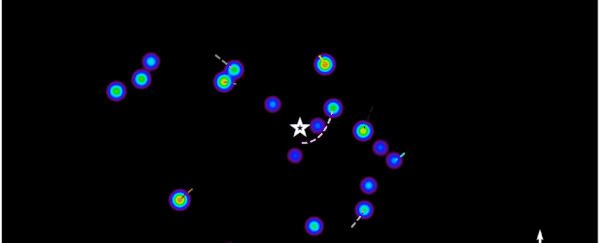Another test of a star orbiting our galaxy's supermassive black hole at insane speeds has once again upheld the theory of general relativity as described by Albert Einstein in 1915.
As it hurtled around the black hole on its closest approach, the light of a star named S2 was stretched out by the intense gravitational forces at play - just as relativity predicts in an effect called gravitational redshift.
If it sounds familiar, that's because it's not the first time we've seen such an achievement. Last year, a team of researchers published their findings on S2 - also known as S0-2, one of a cluster of young, massive S-stars orbiting the galactic centre - as it looped around Sagittarius A*, showing clear evidence of gravitational redshift.
This new result comes from an independent set of observations, confirming and elaborating on the first set of results with additional data and instruments, to rule out any biases or errors that may have originated in the tools themselves.
"We can absolutely rule out Newton's law of gravity," said astronomer Andrea Ghez of the University of California Los Angeles. "Our observations are consistent with Einstein's theory of general relativity."
It's a hard-won result after 24 years of observations. Each of S2's orbits around Sgr A* takes 16 years, and it wasn't until the close approach of last year - when the star came within 17 light-hours of the galactic centre - that we had instrumentation sensitive enough to observe the event in unprecedented resolution.
Sgr A* has a mass equivalent to about 4 million Suns. The gravity this generates is immense, creating the most extreme environment in the Milky Way.
S2 has an elliptical orbit that is accelerated to dizzying speeds by that gravity as it approaches Sgr A*. It slingshots around at 25 million kilometres per hour (15.5 million miles per hour) - almost 3 percent of the speed of light.
When S2 is that close to the black hole, according to relativity, the gravitational effect should stretch the light of the star into longer wavelengths, towards the red end of the electromagnetic spectrum.
S2 reached its maximum velocity in March of last year, followed by closest approach in May, and minimum velocity in September. The team took spectrograph observations of all three events, studying the changes in the star's light as it zoomed around the black hole.
Then, they combined these spectral observations with observations from 1995 to 2017 to reconstruct the entire orbit of the star in three dimensions.
"That's what gives us the entry ticket into the tests of general relativity," Ghez said.
"We asked how gravity behaves near a supermassive black hole and whether Einstein's theory is telling us the full story. Seeing stars go through their complete orbit provides the first opportunity to test fundamental physics using the motions of these stars."
The results not only corroborate, but bolster the results announced last year, once again confirming general relativity as a solid set of rules for understanding the dynamics of gravity.
As we already reported last year, it's not the only test general relativity has passed in recent times. We've also seen a three-body star system, an entire galaxy bending space, and the discovery of gravitational waves - each in their own way neatly falling in line with Einstein's 100-year-old theory. So it's still holding strong.
But the need for a new set of physical laws could be looming.
"[Einstein's] theory is definitely showing vulnerability," Ghez said.
"It cannot fully explain gravity inside a black hole, and at some point we will need to move beyond Einstein's theory to a more comprehensive theory of gravity that explains what a black hole is."
Honestly, that is going to be so cool.
The research has been published in Science.
